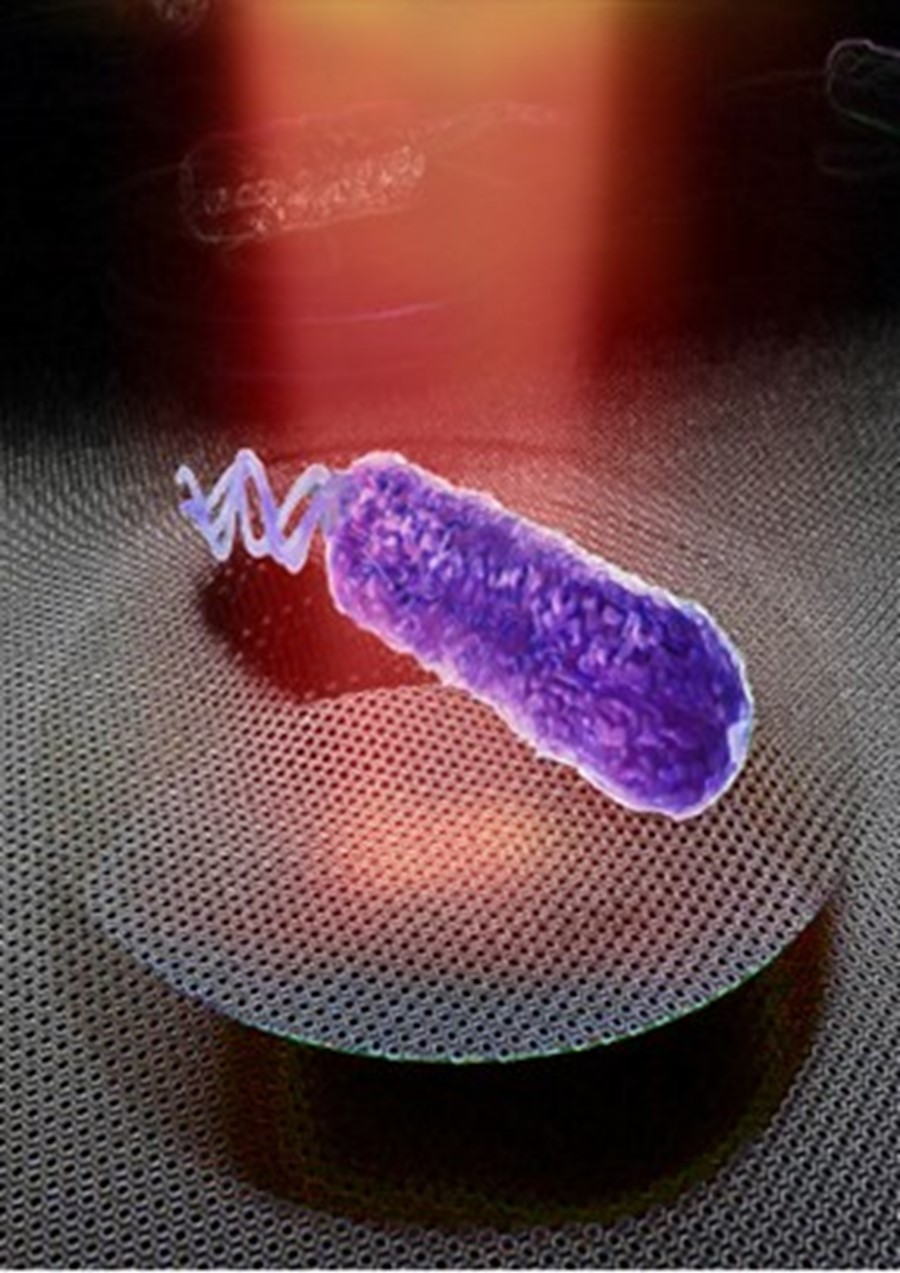Bacterial soundtracks revealed by graphene membrane
Graphene Flagship researchers have developed an innovative graphene sensor to capture the sound of a single bacterium. These graphene-enabled sensors tell apart living organisms, which enables researchers to identify drug-resistant bacteria through the detection of distinctive sounds.
Have you ever wondered if bacteria make distinctive sounds? If we could listen to bacteria, we would be able to know whether they are alive or not. When bacteria are killed using an antibiotic, those sounds would stop, unless they are resistant to the drug.
Graphene Flaghip researchers at TU Delft, Netherlands, were originally looking into the fundamentals of the mechanics of graphene. At a certain point, they wondered what would happen if this extremely sensitive material encounters a single biological object – like a bacterium.
“Graphene is a form of carbon consisting of a single layer of atoms” says Farbod Alijani, lead author of the research paper published in Nature Nanotechnology. “It’s very strong with nice electrical and mechanical properties, and it’s also extremely sensitive to external forces.”
The team of researchers initiated a collaboration with TU Delft experts in nanobiology and nanomechanics. Together, they ran their first experiments with E. coli bacteria. Co-author Cees Dekker said: “What we saw was striking. When a single bacterium adheres to the surface of a graphene drum, it generates random oscillations with amplitudes as low as a few nanometers that we could detect. We could hear the sound of a single bacterium!”
Punching a graphene drum with a bacterium
These extremely small oscillations are a result of the biological processes of the bacteria with main contribution from their flagella, the little tails that propel certain cells, including some bacteria. “To understand how tiny these flagellar beats on graphene are, they are at least 10 billion times smaller than a boxer’s punch when reaching a punch bag. Yet, these nanoscale beats can be converted to sound tracks and listened to - and how cool is that,” Alijani says.
Graphene for fast detection of antibiotic resistance
This research has enormous implications for the detection of antibiotic resistance. The experimental results were unequivocal: If the bacteria were resistant to the antibiotic, the oscillations just continued at the same level. When the bacteria were susceptible to the drug, vibrations decreased until one or two hours later, but then they were completely gone. Thanks to the high sensitivity of graphene drums, the phenomenon can be detected using just a single cell.
“For the future, we aim at optimizing our single-cell graphene antibiotic sensitivity platform and validate it against a variety of pathogenic samples. So that eventually it can be used as an effective diagnostic toolkit for fast detection of antibiotic resistance in clinical practice,” added Alijani.
Peter Steeneken, Graphene Flagship ‘Sensors’ Work Package Leader, and co-author of this study, said: “This would be an invaluable tool in the fight against antibiotic resistance, an ever- increasing threat to human health around the world.”
Sanna Arpiainen, Graphene Flagship ‘Sensors” Work Package Deputy Leader, who was not involved in the research, commented: “Antibiotic resistance is a growing concern, and using graphene to test it down to the single bacterium level has the potential to battle it by reducing the detection time”.
Andrea C. Ferrari, Science and Technology Officer of the Graphene Flagship and Chair of its Management Panel, adds: “This is a nice example of how the unique mechanical properties of graphene can be use in biosensors. This work paves the way to an entire new class of devices based on singe bacterial sound detection. It is yet another milestone in the technology and innovation roadmap of the Graphene Flagship.”
Reference
Probing nanomotion of single bacteria with graphene drums, I.E. Rosłoń, A. Japaridze, P.G. Steeneken, C. Dekker, F. Alijani, Nature Nanotechnology, 2022, DOI: 10.1038/s41565-022-01111-6.

Artist’s impression of a graphene drum detecting nanomotion of a single bacterium (Credit: Irek Roslon, TU Delft)




